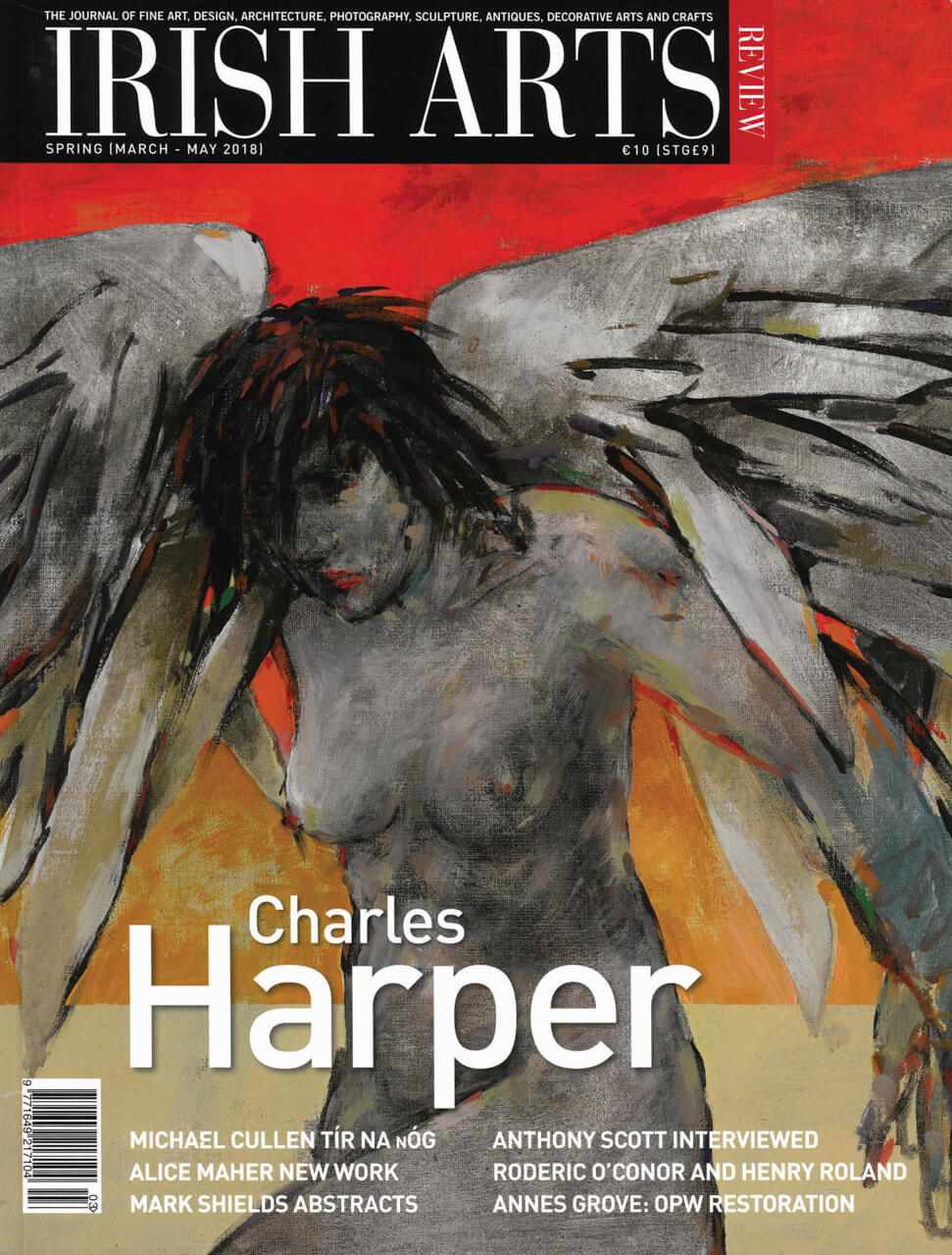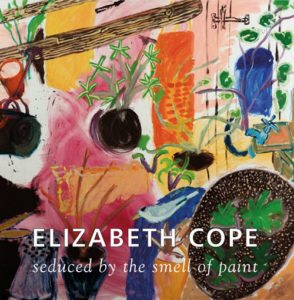
 Elizabeth Cope: Seduced by the smell of paint
Elizabeth Cope: Seduced by the smell of paint
Sandra Gibson, Hilary Hope Guise, Claire Henry and
Niall MacMonagle
Gandon Editions
pp 192 fully illustrated h/b
€25.00 ISBN 978-1-910140-15-4
Alannah Hopkin
This magnificent monograph marks forty years of intense artistic activity on the part of Elizabeth Cope. Born in Kildare in 1952, Cope now lives near Paulstown, Co Kilkenny, in Shankill Castle, a stately home whose walls also serve as a gallery for the many works produced by this prolific and energetic artist.
This is a bigger than average Gandon monograph, with 153 full-size pages of colour reproductions, and a further 32 pages of text with colour illustrations. Both Hilary Hope Guise’s introduction and Sandra Gibson’s essay, ‘Living in a Gallery‚’, identify Cope as a painter committed to the motto carpe diem. ‘I paint through the chaos of everyday life. If I were to wait for a quiet moment I would never paint‚’ says Cope. An interview with Niall MacMonagle allows the artist to reminisce informally, starting with the moment as a nine-year-old when she was first ‘seduced by the smell of oil paint,‚’ as the subtitle recalls.
After two years at the NCAD, Cope studied for another five in London, and has travelled widely on residencies, including Central America and Somalia for Trócaire, and has averaged one solo show a year since 1979. Her work is colourful, confident and energetic, glorying in painterliness and colour. Guise compares Cope’s work to Vlaminck, Derain, Matisse and the Dutch Expressionist, Appel.
Her work is colourful, confident and energetic, glorying in painterliness and colour
Sandra Gibson’s longer essay opens with a quote from GK Chesterton: ‘There is a road from the eye to the heart that does not go through the intellect‚’. But having identified Cope’s intuitive approach to her art, Gibson then argues convincingly for the importance of the darker side of her work. This includes the famously graphic ‘menopause paintings‚’, and her frequent use of skeletons, both human and animal, indicating the big issue of death that stands in the midst of the light, colour and humour so characteristic of this most inventive of artist. This beautifully produced book is a credit to all who worked on it, and a fitting tribute to Cope’s life’s work.
Alannah Hopkin is a novelist, travel writer, and critic.



